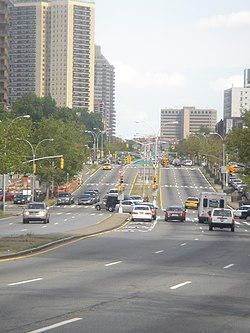- Keshavarz Boulevard of Tehran in mid 1970s
A boulevard is a type of broad avenue planted with rows of trees, or in parts of North America, any urban highway or wide road in a commercial district.
Contents
- Etymology
- Notable examples
- Asia
- Australia and Oceania
- Europe
- North America
- South America
- References
- Books
- External links
In Europe, boulevards were originally circumferential roads following the line of former city walls.
In North American usage, boulevards may be wide, multi-lane thoroughfares divided with only a central median.




















